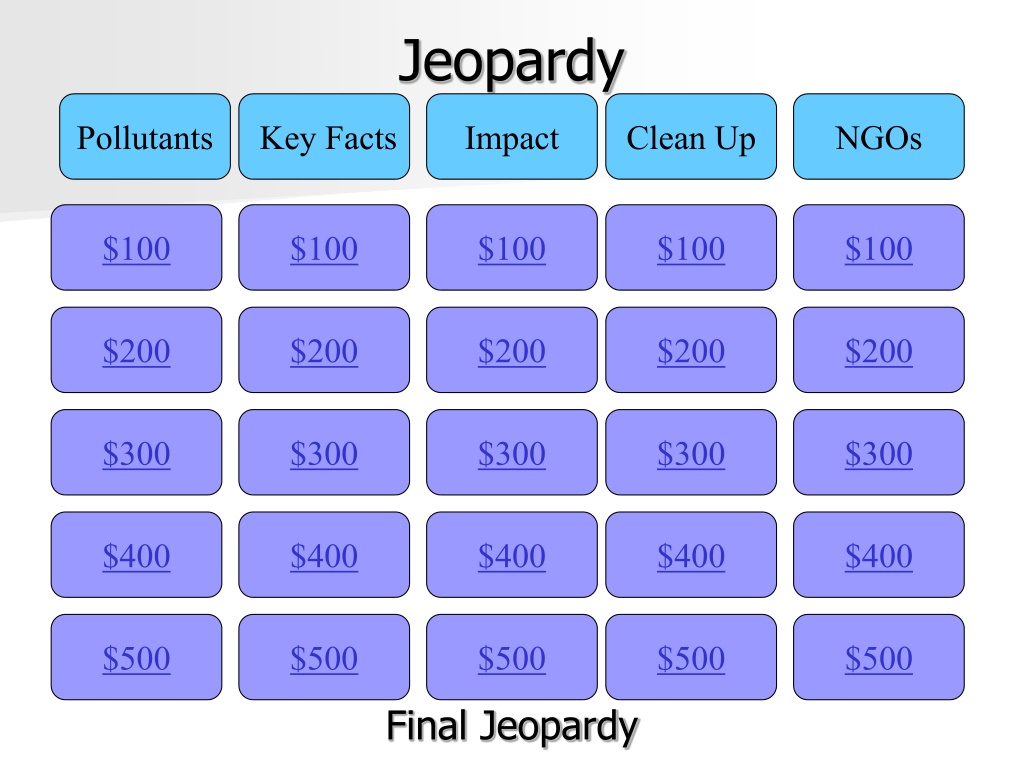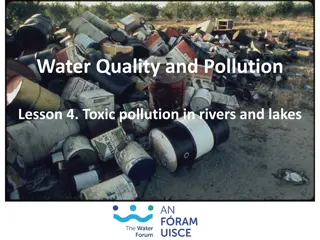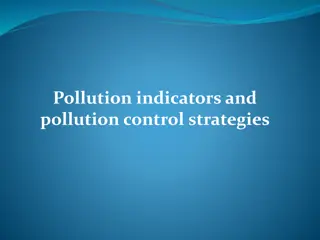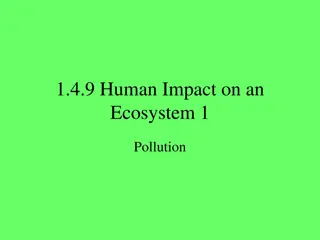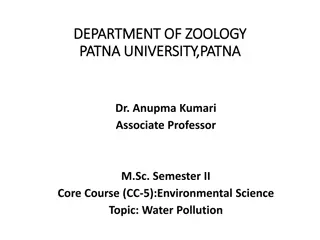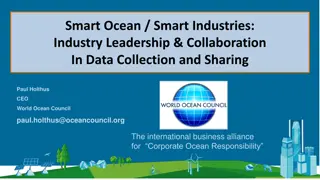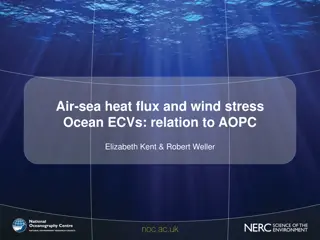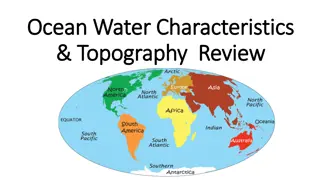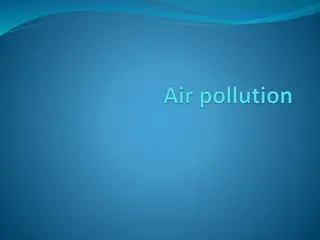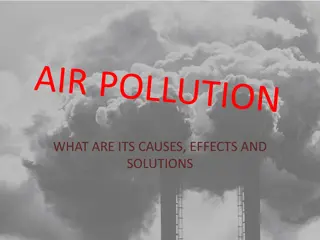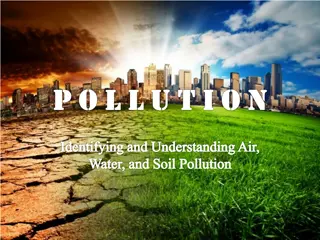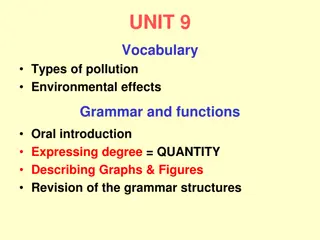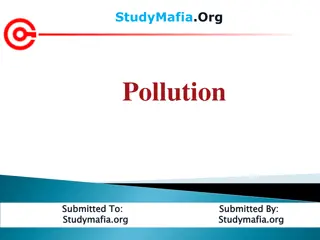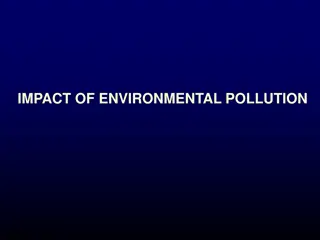Ocean Pollution Jeopardy: Key Facts and Pollutants Impact
Explore the devastating impact of pollutants on oceans through a Jeopardy-style game showcasing key facts about plastic pollution, offshore facilities, waste disposal, sea turtle endangerment, and common ocean trash items. Learn about the Great Pacific Garbage Patch, plastic island formation, and the lengths taken for ocean cleanup efforts. Discover the concerning issues of plastic waste mismanagement, marine animal harm, and the alarming prevalence of cigarette trash in our oceans.
Download Presentation

Please find below an Image/Link to download the presentation.
The content on the website is provided AS IS for your information and personal use only. It may not be sold, licensed, or shared on other websites without obtaining consent from the author. Download presentation by click this link. If you encounter any issues during the download, it is possible that the publisher has removed the file from their server.
E N D
Presentation Transcript
Jeopardy Key Facts NGOs Pollutants Impact Clean Up $100 $100 $100 $100 $100 $100 $100 $100 $100 $100 $200 $200 $200 $200 $200 $200 $200 $200 $200 $200 $300 $300 $300 $300 $300 $300 $300 $300 $300 $300 $400 $400 $400 $400 $400 $400 $400 $400 $400 $400 $500 $500 $500 $500 $500 $500 $500 $500 $500 $500 Final Jeopardy Final Jeopardy
Pollutants - $100 Pollutant that has created islands in the Oceans. What is plastic? -Plastics are sticking together to create massive islands or garbage.
Pollutants - $200 These offshore facilities are also to plain form polluting the oceans. What are oil and natural gas platforms? -Oil and natural gas platforms as well as ships increase polution in the ocean.
Pollutants - $300 One of the top ways plastic waste gets into oceans. What is mismanaged waste disposal? -Simple mismanagement of waste disposal leads to millions of tons of waste dumped into the oceans each year, and the number is only increasing.
Pollutants - $400 The most affected marine animal due to plastic pollution. What are sea turtles? -Sea turtles are widely considered the most deeply impacted because many of them are ingesting large amounts of microplastics which is killing most of them and destroying the digestive systems of the others.
Pollutants - $500 Most common item of trash in the ocean. What are cigarettes? -Surprisingly, enormous amounts of people are smoking cigarettes and throwing them in th ocean, almost twice as much as any other item.
Key Facts - $100 The Great Pacific Grabage Patch is around twice the size of this US State. What is Texas? -The great Pacific Garbage Patch is around 617,763 square miles and Texas is only around 268,597 square miles.
Key Facts - $200 Length of garbage cleanup system. What is 600 meters (2000 feet) -The very long system optimizes the amount of garbage that can be removed from the ocean in a certain aount of time.
Key Facts - $300 The United Nations Environmental Program estimates that this many micro plastic particles are already in the ocean. What is 51 trillion microplastic particles? -The UNEP has estimated around 51 trillion microplastic particles are already in the oceans.
Key Facts - $400 Person who founded The Ocean Cleanup in 2013. Who is Boyan Slat? -Boyan was just sixteen when he went scuba diving and realized there was more plastic in the water than fish. After a Ted Talks video of him went viral about his idea for cleaning the oceans, his project took off.
Key Facts - $500 This country pollutes the ocean nearly 30 times more than the United States. What is China? -China, along with other countries in that area dump a ridiculous amount of waste into the oceans. This is another reason we need to focus on global solutions instead of just national solutions.
Impact - $100 Many species that live in the oceans are on the verge of this due to plastic pollution. What is extinction? -Many ecosystems and sea creatures themselves are being compromised because the plastic is killing off so many animals as well as plants.
Impact - $200 Negative impacts the Ocean Cleanup's fleet of systems will have on nearby sea life. What are none? -With the ocean current flowing under the completely solid system, it is nearly impossible for creatures to be trapped. Also workers are monitoring the system as it is taken out of the water, so sea creatures are guaranteed to be safe.
Impact - $300 Up to this percentage of all seabirds are directly affected by pollution. What is 44%? -Studies show that around 44% of all seabird species have plastic in or around them.
Impact - $400 The year in which the Great Pacific Garbage Patch will be ninety percent clean, as shown in the image on the right. What is 2030? -With cleanup, the patch can be reduced by such a great amount in as little as ten years.
Impact- $500 This species is also affected by the pollution in the oceans. What is mankind? -The pollution in the oceans can affect the ocean creatures which comes back to affect mankind causing several health problems.
Clean Up - $100 The number of major ocean garbage patches across the Earth (also called ocean gyres). What is 5? -The largest of these is by far the Great Pacific Garbage Patch, however there are four more across the world; another in the lower Pacific, two in the Atlantic, and the final in the Indian Ocean.
Clean Up - $200 Name of the first machine of its kind that recently set out to clean up the Great Pacific Garbage Patch. What is System 001? -System 001 is a high-tech floating device with a skirt underneath to capture accumulated plastic in the Great Pacific Garbage Patch.
Clean Up - $300 The method of converting waste into reusable material. What is recycling? -Some of the plastic being collected from the ocean is being converted from trash back into useful material.
Clean Up - $400 50% of the Great Pacific Garbage Patch can be cleaned within this amount of time if proper action is taken. What is 5 years -In 5 years 50% of the Great Pacific Garbage Patch can be cleaned if the proper attention is given to it.
Clean Up - $500 Takes advantage of natural oceanic currents to ctach plastic. What is the Drifting System? -The drifting system is deployed to catch plastic by drifting along with the natural current that the plastics follow.
NGOs - $100 Non-governmental organization that focuses on collecting plastic and stopping the growth of garbage patches. What is The Ocean Cleanup? -The Ocean Cleanup is dedicating to stopping the huge garbage islands in the Oceans.
NGOs - $200 Non-governmental organization that focuses on cleaning plastic, marine debris, and pollution from above and below the surface of the water. What is Project Aware? -Project Aware's goal is to clean plastic, debris and pollution from all over the world even from sights where they need to dive.
NGOs - $300 NGO that does extensive research to conserve our oceans. What is the Ocean Foundation? -Since 2001, the Ocean Foundation has spent over $44 million on marine conservation over the globe.
NGOs - $400 This NGO for ocean cleanup shares its name with large systems of circulating ocean currents. What is the 5 Gyres? -5 Gyres is dedicated to ending plastic pollution using science, education and art.
NGOs - $500 NGO that focuses on coastal preservation. What is the Surfrider Foundation. -The Surfrider Foundation works mainly along the North American coastline, and has a very strong social media presence which attracts activists for activities such as beach cleanups.
Final Jeopardy The resolution to the issue of plastic waste in the oceans. The resolution is greater attention and global push to address and stop the pollution in our oceans.
